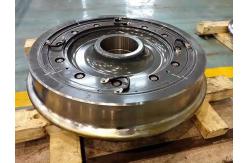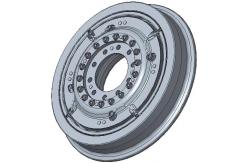Light Rail Resilient Wheels Safety Assembled With Tyres And Wheel Center
|
|
For Light rail resilient wheels , it is consist of forging tyres,casting wheel center, bolts and assembled together. The wheel tyre is elastically supported on the wheel, which can effectively reduce curve noise, reduce track impact, reduce wheel-rail wear and increase the service life of line vehicles. The elastic wheel is a split wheel with a rubber damping element in
a compressed state embedded between the inner and outer rims.
Relying on the vibration reduction and vibration isolation
characteristics of rubber, the vibration impact of the wheel is
reduced when the subway vehicle is running, and the vibration and
noise level of the vehicle is effectively reduced. It is suitable
for subway trains with a speed of 80-160. Key Features and Benefits of Resilient Wheels for LRVs:1. Improved Ride Comfort:Urban tracks often have imperfections due to the wear and tear caused by traffic and environmental conditions. Resilient wheels help absorb the shocks from these imperfections, leading to a smoother ride for passengers. The rubberized or elastomeric layers incorporated into these wheels provide a cushioning effect, reducing the vibrations and impacts that are typically felt in the cabin. 2. Noise and Vibration Dampening:Resilient wheels significantly reduce the noise and vibrations associated with traditional steel wheels. In dense urban areas, where noise pollution can be a significant concern, quieter trains not only improve passenger comfort but also enhance the overall quality of life for residents near the rail line. The reduced vibration also contributes to less wear on both the vehicle and the tracks. 3. Enhanced Durability:These wheels are designed to withstand the stresses of frequent stops, starts, and tight curves that are common in urban light rail systems. By improving the energy absorption properties of the wheels, resilient wheels help prevent premature wear and tear on both the wheels and the track. This extends the lifespan of the rail system and reduces the need for costly repairs and replacements. 4. Reduced Track Wear:The shock-absorbing properties of resilient wheels not only benefit the passengers but also reduce the forces exerted on the tracks. This helps to prevent damage to the rail infrastructure, which is a common issue with rigid steel wheels. With less wear on the track, maintenance costs are reduced, and the overall lifespan of the rail network is extended. 5. Sustainability:Given the growing emphasis on sustainability in urban transportation, resilient wheels offer environmental benefits. The ability to reduce vibration and noise pollution means less disruption to surrounding communities. Additionally, resilient wheels can be designed to be more eco-friendly, using recyclable materials and producing fewer emissions during manufacturing compared to traditional steel wheels. 6. Cost-Effectiveness:Though resilient wheels may come with a higher initial cost compared to traditional steel wheels, the long-term benefits of reduced track wear, less frequent maintenance, and improved energy efficiency make them a cost-effective solution. These factors ultimately reduce the total cost of ownership over the life of the light rail vehicle. Materials and Construction of Resilient Wheels for Light Rail VehiclesResilient wheels are typically constructed using a combination of steel and elastic materials such as rubber compounds or elastomers. The wheel is designed in layers, with a steel core providing structural strength and the resilient outer layer absorbing shocks and impacts. Some common materials used in the production of resilient wheels include:
Wheel Types:
Applications of Resilient Wheels in Light Rail SystemsResilient wheels are particularly well-suited for light rail vehicles operating in urban environments, where high-frequency stops, sharp curves, and mixed-traffic conditions are common. Here are some key scenarios where these wheels are most beneficial:
Conclusion:As cities continue to invest in expanding and modernizing their light rail networks, the adoption of resilient wheels is becoming increasingly essential. These wheels provide a wide range of benefits, from improved passenger comfort and reduced noise pollution to lower maintenance costs and enhanced track longevity. By incorporating advanced materials and innovative design, resilient wheels offer a promising solution to the unique demands of urban rail transport. As a result, they are becoming a critical component of light rail vehicles, helping to create more efficient, sustainable, and comfortable public transit systems for the future. |
| Product Tags: Tyres Light rail resilient wheels Safety Light rail resilient wheels Light rail resilient wheels |
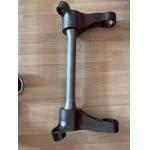
|
Customized Design Railway Suspension System In Passenger Cars |
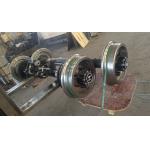
|
Custom Forged Alloy Wheels Experience Unmatched Style and Performance |
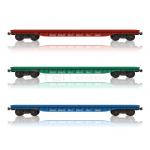
|
Kingrail Steel Rail Wheels For Open Top Cart Hay Top Notch Performance And Reliability |
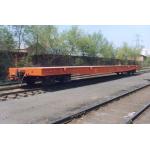
|
Easy Maneuverability Reinforced Rail Track Trolley For Heavy Industrial Loads Standard Track Gauge 1435 Mm |
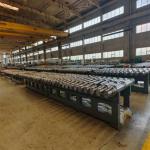
|
Manufacturing Process Heat Treatment Rail Wheels And Axles EN 13261 Europe Standards |
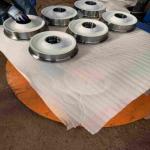
|
Round Vehicle Wheels Forged Alloy Steel For Ultimate Corrosion Protection In Black Or Silver |

